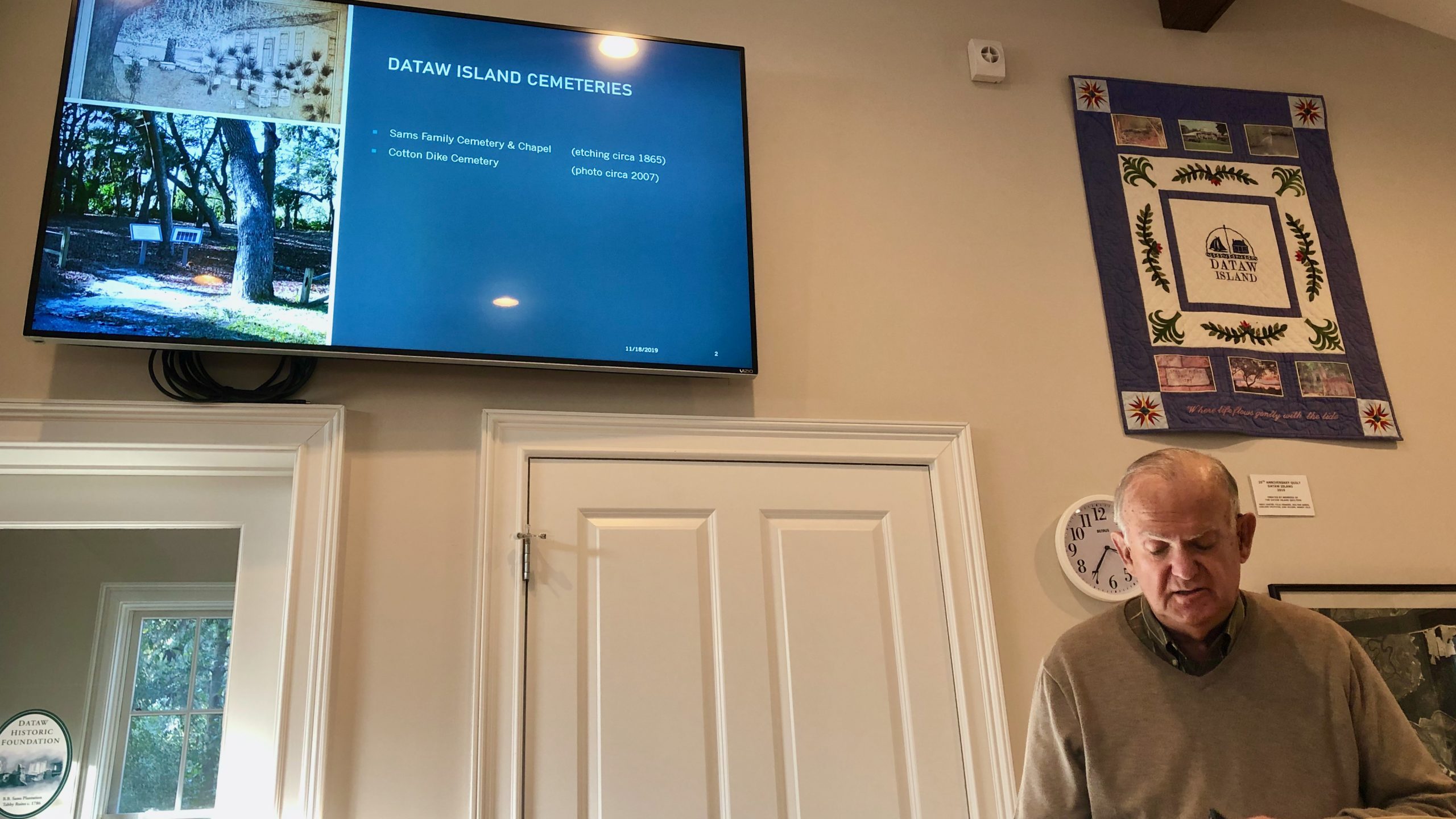The Tale of Two Cemeteries was presented by John Colgan of the Dataw Historic Foundation on Nov 18, 2019.
The tabby ruins at the Sams Plantation Complex stand as mute evidence of a bygone era. There were two distinct ways of life which coexisted in the antebellum South. The Plantation Owner and his family were White, European-American, educated, affluent and engaged, politically, socially and culturally, in the wider community. The plantation owners all spoke English, all were able to trace their family’s genealogy, history, customs and culture back hundreds of years. They relied upon family custom and tradition to make socially appropriate decisions regarding education, marriage, dress, work, religion. etc.
The Slaves, on the other hand, were captured by European slavers who forcibly removed them to North and South America from all over West Africa. They were taken from many tribes. Captives spoke a variety of languages; had differing religious beliefs, tribal customs and culture. They had different skill sets and came from various stations in life. Once captured, they were transported, sometimes hundreds of miles, to coastal shipping ports where they were graded as animals would be by gender, age, physical fitness, etc. and sold into the Atlantic slave trade. If they survived the “Middle Passage” (1.5 million did not) they were again auctioned off to plantation owners without regard to their past lives. Thus, slaves found themselves thrown together with total strangers, often unable to communicate with one another and with differing customs and beliefs.
But, on Dataw from 1783 until 1861 perhaps the only shared experience in the lives of both the slave owners and the slaves was DEATH.


